April 15 update on COVID-19 in MN: New cases, vaccinations continue steady climb

Go Deeper.
Create an account or log in to save stories.
Like this?
Thanks for liking this story! We have added it to a list of your favorite stories.
3 things to know
About 49 percent of adults 16 and older in Minnesota have gotten at least one vaccine dose, but vaccination rates aren’t likely to accelerate in the next week.
Hospital admissions, active caseload trends are hovering at winter levels; health officials say virus variants likely are driving increase in new cases.
Deaths continue to plateau, with an additional 11 reported by the state.
Update: 2:02 p.m.
Minnesota’s new COVID-19 cases continue to grow, but growth is slower than in recent weeks, blunted by the pace of vaccinations. Nevertheless, demand on the state’s hospital capacity continues to climb, while deaths have plateaued.
Here are Minnesota’s latest COVID-19 statistics, as of Thursday:
6,989 deaths (11 announced Thursday); 549,830 positive cases; 95 percent off isolation
49 percent of adults with at least one dose; 33 percent completely vaccinated
About 85 percent of Minnesotans 65 and older with at least one vaccine dose
Minnesota on track to vaccinate 80 percent of adults by late May
Despite a temporary disruption in vaccines from Johnson & Johnson, Minnesota is on track to vaccinate 80 percent of adults by May 22, according to an MPR News analysis.
And for the first time, younger adults between 18 and 49 have been getting vaccinated slightly faster than people who are between 50 and 64, a signal that Minnesotans across age groups are eager to get their shots.
Turn Up Your Support
MPR News helps you turn down the noise and build shared understanding. Turn up your support for this public resource and keep trusted journalism accessible to all.
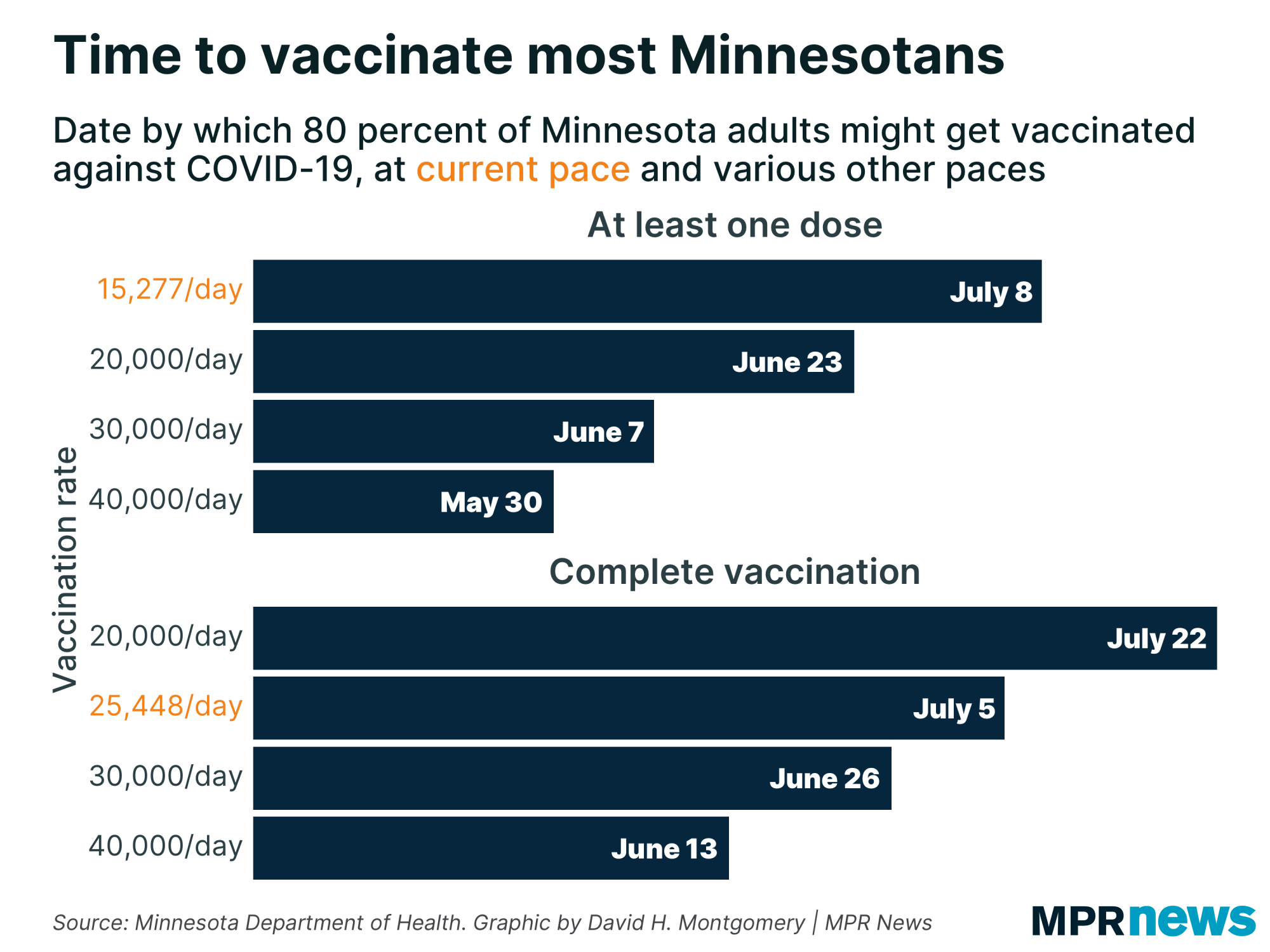
Still, Minnesota’s vaccination rate is about to go down.
Last week the state had record-high allocations of around 30,000 first doses a day. This week, the state will be allocated about 20,000 doses per day, a trend driven by the pause on Johnson & Johnson vaccine distribution.
The pause was prompted by a joint Centers for Disease Control and Prevention and Food and Drug Administration recommendation that providers pause their distribution of the J&J vaccine while the agencies investigate the exceedingly rare occurrence of blood clots.
The clots have been found in six women — out of nearly 7 million vaccines given nationwide — between the ages of 18 and 48, and occurred six to 13 days after vaccination. Officials say they are not aware of any cases of blood clots occurring among the more than 184,000 state residents who have received the single dose vaccine.
Before this week’s J&J pause and an earlier factory mishap, officials had been hopeful that a flood of new J&J vaccines would combine with existing Pfizer and Moderna vaccines to drive Minnesota’s vaccination rate to a new level.
The newest numbers still suggest the state may reach a hopeful milestone — half of adults with at least one vaccine dose — by the end of this week or early next.
About 33 percent of Minnesota adults are completely vaccinated; 49 percent have received at least one vaccine dose, including about 85 percent of residents age 65 and older, the state Health Department said Thursday.
Case counts slowly trend higher
Meanwhile, case counts continue to climb — but not as quickly as they did in previous weeks.
Minnesota reported about 2,700 new COVID-19 cases Thursday, a jump over recent days. Overall the trend is still upward, but there are signs of a possible plateau.
Minnesota’s overall pandemic death toll rose to 6,989 Thursday. Among those who have died, about 62 percent had been living in long-term care or assisted living facilities; most had underlying health problems.
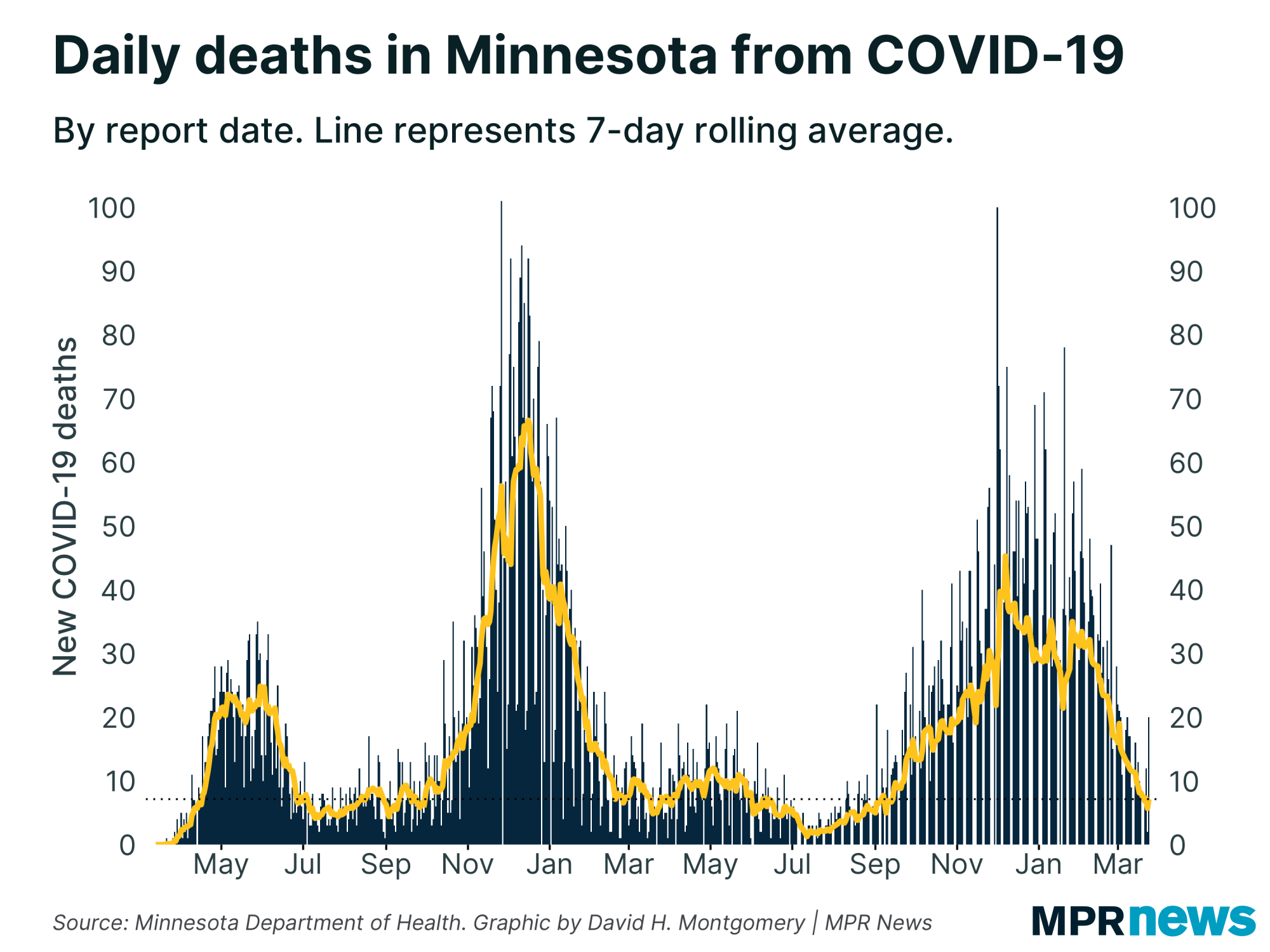
The state has recorded 549,830 total confirmed or probable cases so far in the pandemic, including 2,736 posted Wednesday. About 95 percent of Minnesotans known to be infected with COVID-19 in the pandemic have recovered to the point where they no longer need to be isolated.
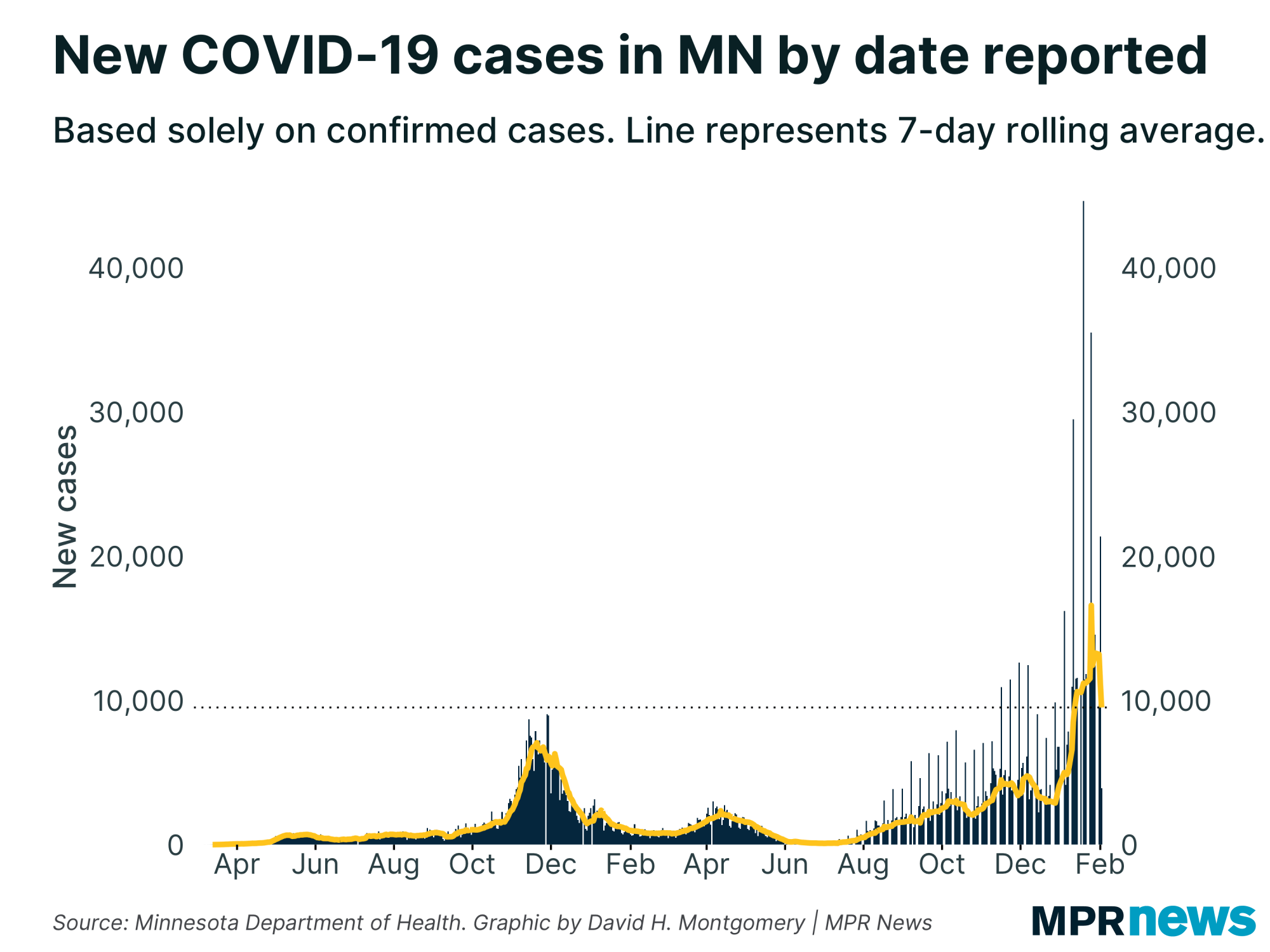
Hospital, ICU needs increase
Hospitalizations have climbed significantly in the past weeks to levels not seen since January, and deaths tied to the disease are trending up, too. Health officials say coronavirus variants circulating in Minnesota are driving those increases.
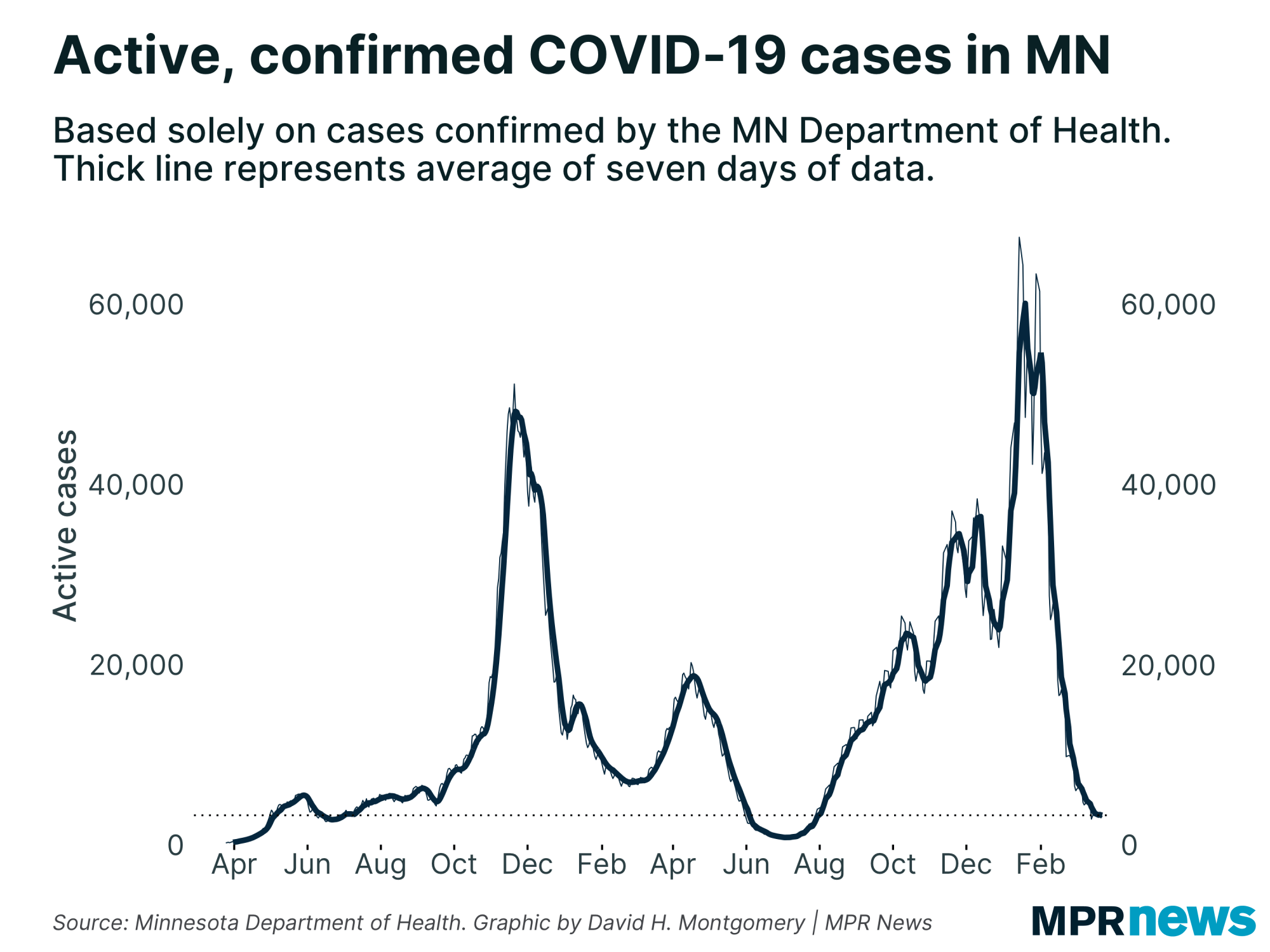
The state on Wednesday reported 699 people in Minnesota hospitals with COVID-19; 168 needing intensive care, hovering near the highest number of ICU patients since early January.
By admission date, new non-ICU admissions are up about 35 percent over the past two weeks. ICU admissions are up 20 percent.
While the numbers are still low, when compared to late November and early December, the rising trend is notable, given the worries over the rise of the highly contagious B.1.1.7 variant — first identified in the United Kingdom — which state health officials have said they suspect is driving the current upswing.
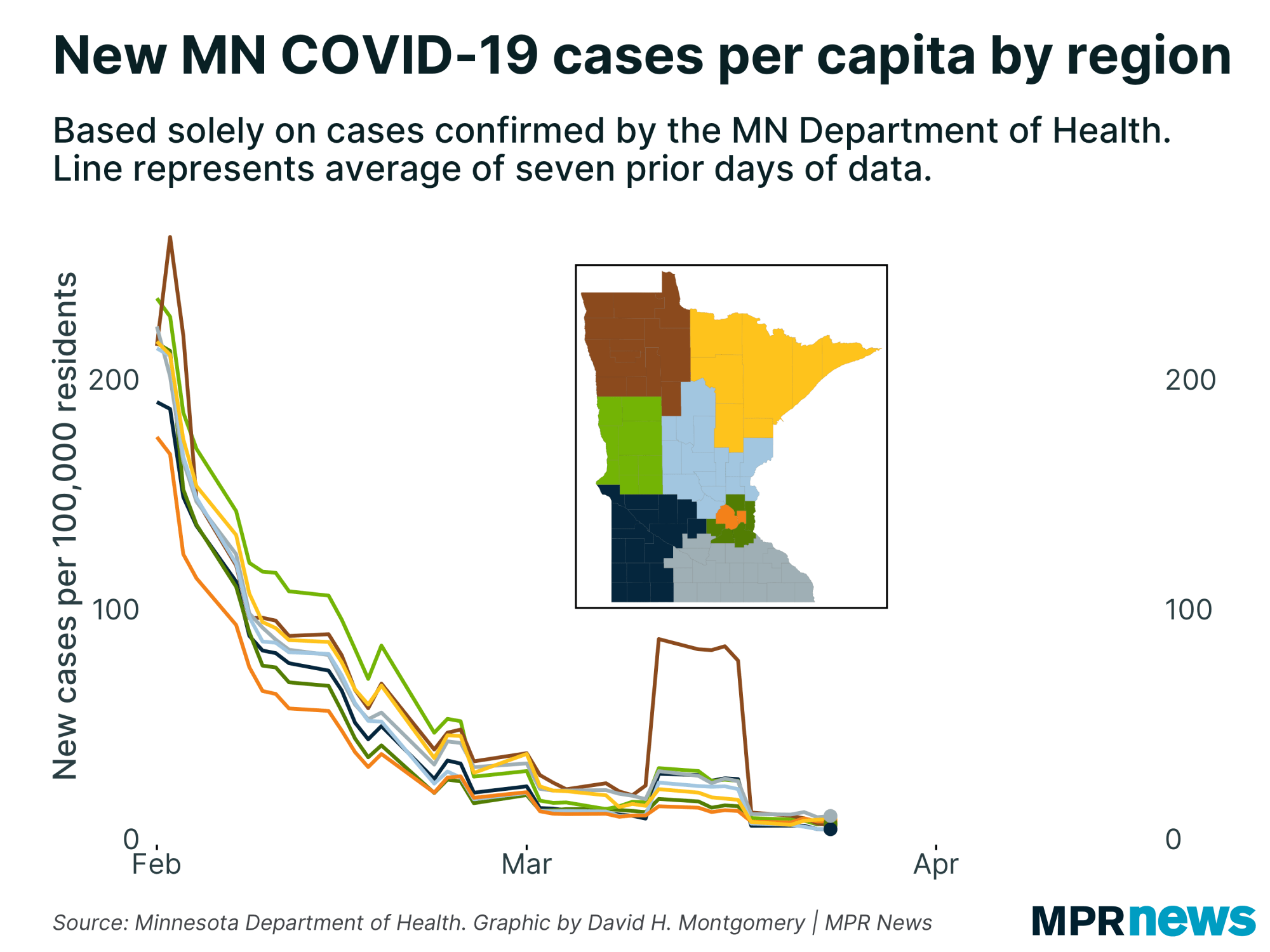
State health commissioner Jan Malcolm said recently that while the increase in cases is concerning, the growing number of vaccinated people in Minnesota means the state likely won’t see as steep a surge in cases of the scope seen in November and December.
Cases among young people growing
The number of high school-age youth confirmed with the disease has grown, with more than 43,000 total cases among those ages 15 to 19 since the pandemic began.
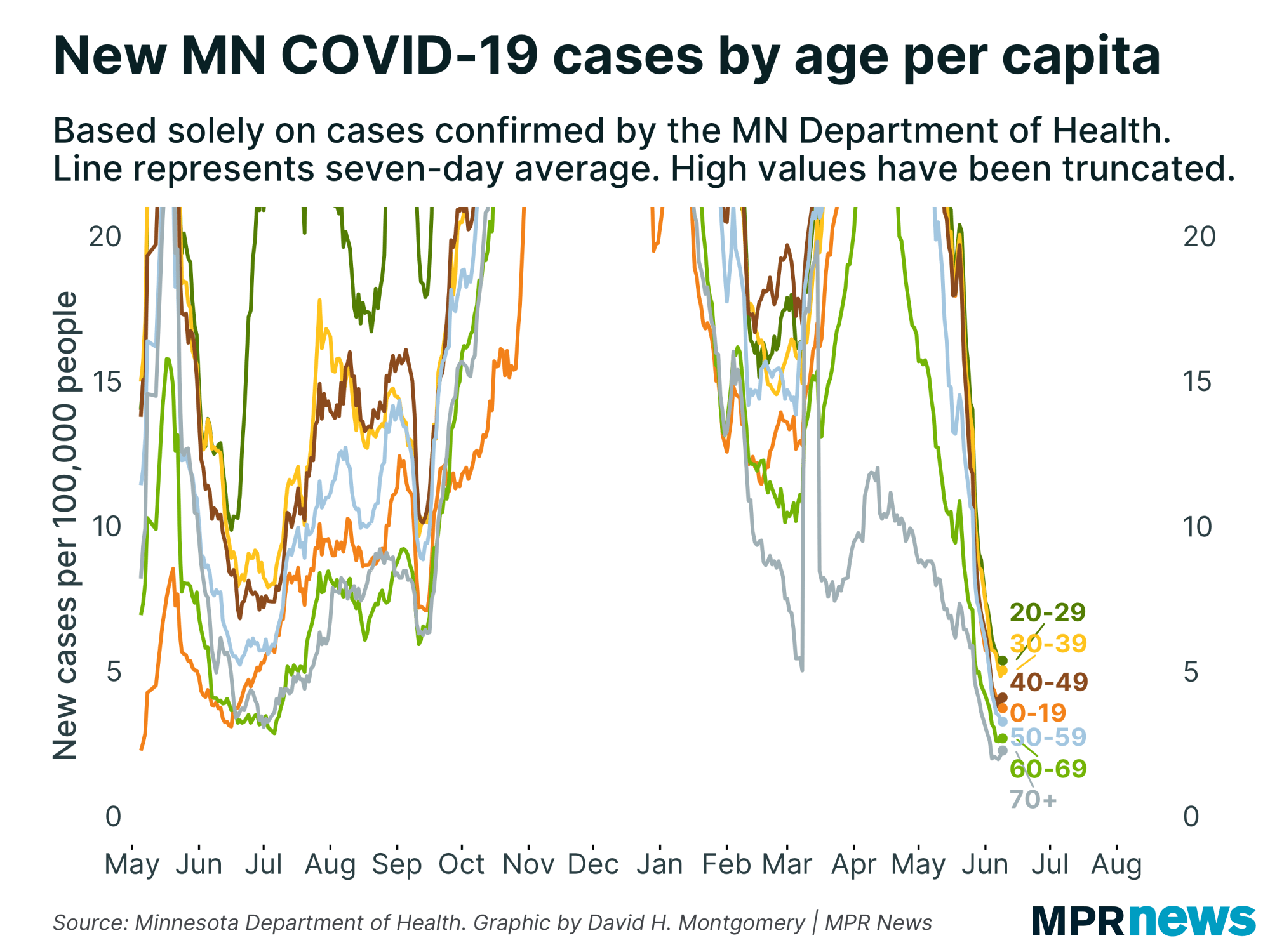
With kids increasingly returning to school buildings and sports, Minnesota public health officials are urging Minnesota families with children to get tested every two weeks for COVID-19 until the end of the school year.
Although young people are less likely to feel the worst effects of the disease and end up hospitalized, experts worry they will spread it unknowingly to older relatives and members of other vulnerable populations. Those with the coronavirus can spread it when they don’t have symptoms.
Caseloads among people of color
In Minnesota and across the country, COVID-19 has hit communities of color disproportionately hard in both cases and deaths. That’s been especially true for Minnesotans of Hispanic descent for much of the pandemic.
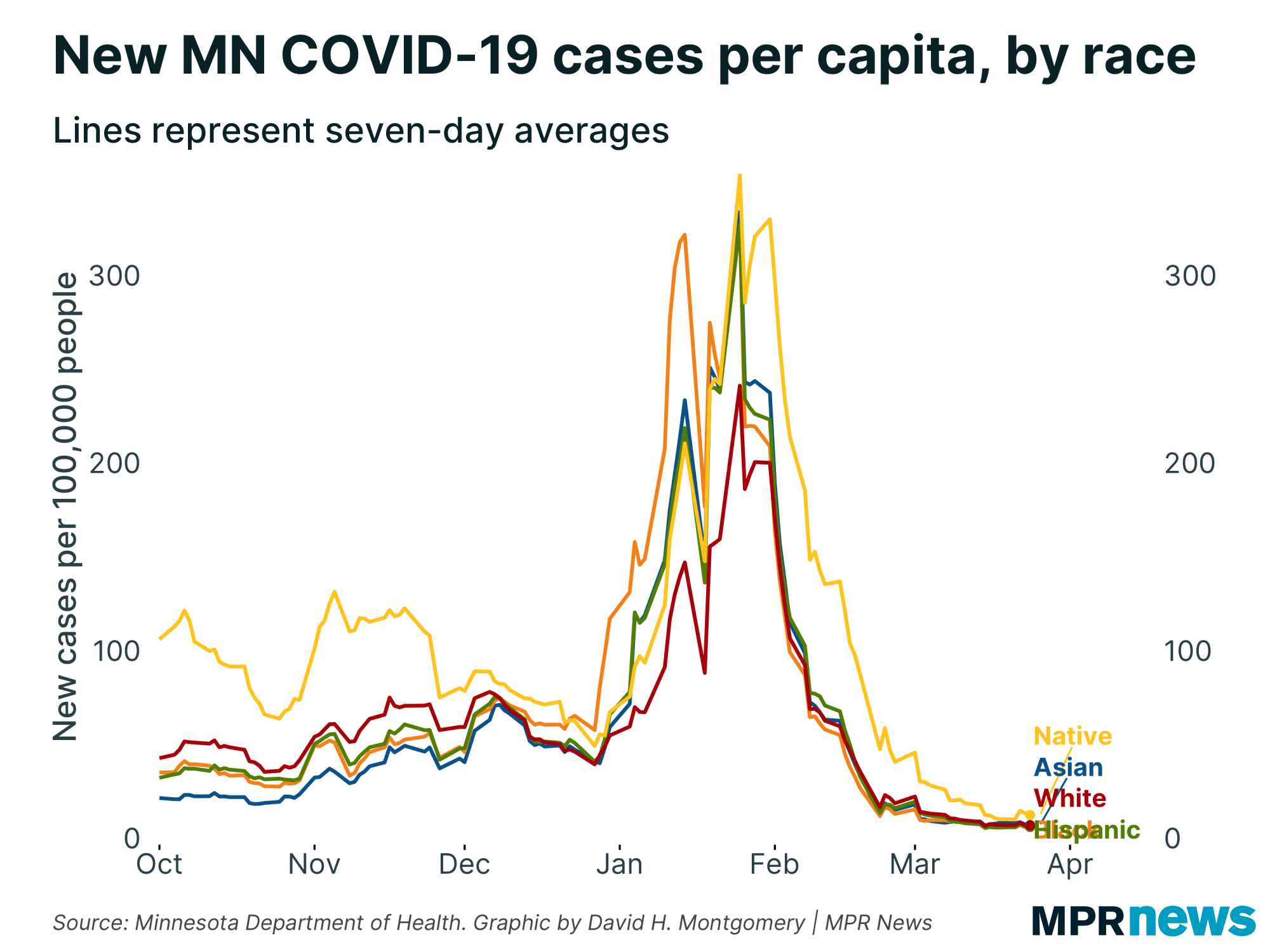
Even as new case counts continue to track well below their late November, early December peaks, the data shows Latino people continue to be hit hard.
Latest developments from around Minnesota
CentraCare responds to J&J vaccine questions
CentraCare, a central Minnesota health care provider, has administered the Johnson & Johnson vaccine at several mobile vaccination sites, including a St. Cloud mosque on Monday.
On Tuesday came the FDA and CDC’s joint recommendation to pause J&J vaccine administration.
Mahado Ali, CentraCare's supervisor of cultural competency and health equity, said the news has raised some concern among those who received the vaccine.
"However, we've been very connected to the imams and the community health workers in making sure that the right information is out there for patients and that they're getting all of their questions answered,” Ali said.
CentraCare says it's received no reports of anyone developing symptoms of the rare blood clotting condition that was found in six people who’d received the vaccine, out of nearly 7 million nationwide.
On a local Somali TV station, Dr. Kim Tjaden, CentraCare's medical director of community health, described the potential symptoms, including severe headache, shortness of breath, leg pain or severe abdominal pain.
"If you have receive this vaccine and you develop those symptoms, we want you to call the Department of Health," said Tjaden, who said CentraCare continues to believe that COVID-19 vaccines are very safe, and that the pause is likely to be temporary.
— Kirsti Marohn | MPR News
Peacetime emergency order extended
Gov. Tim Walz has extended a peacetime emergency order tied to COVID-19 another 30 days.
The move was ratified Wednesday by a panel of statewide officeholders.
The emergency has been in effect since March 2020. It allows Walz to make decisions outside of normal procedures.
The governor said he’s open to tailoring the executive authority going forward. But he said ending it outright could hamper efforts to quickly distribute vaccines and conduct widescale testing.
He also said some federal money is tied to the emergency declaration.
“The frustration lies between mitigation efforts around the health emergency and our ability to use it,” Walz said. “Because when we start being specific and saying, ‘Would you like us to end the vaccine sites? No, no don’t end the vaccine sites. Would you like us to end supplemental nutrition programs? No, no don’t end supplemental nutrition programs.’ It ends up being, just get rid of the mask mandate.”
Republicans in the Legislature want Walz to relinquish the authority and involve lawmakers in more decisions.
Health Commissioner Jan Malcolm said there are still concerning trends with virus spread — including the state’s test positivity rate, which she said is back above 7 percent.
That rate, she said, is higher than it’s been in recent months and comparable to levels seen last fall.
— Brian Bakst | MPR News
COVID-19 in Minnesota
Data in these graphs are based on the Minnesota Department of Health's cumulative totals released at 11 a.m. daily. You can find more detailed statistics on COVID-19 at the Health Department website.


